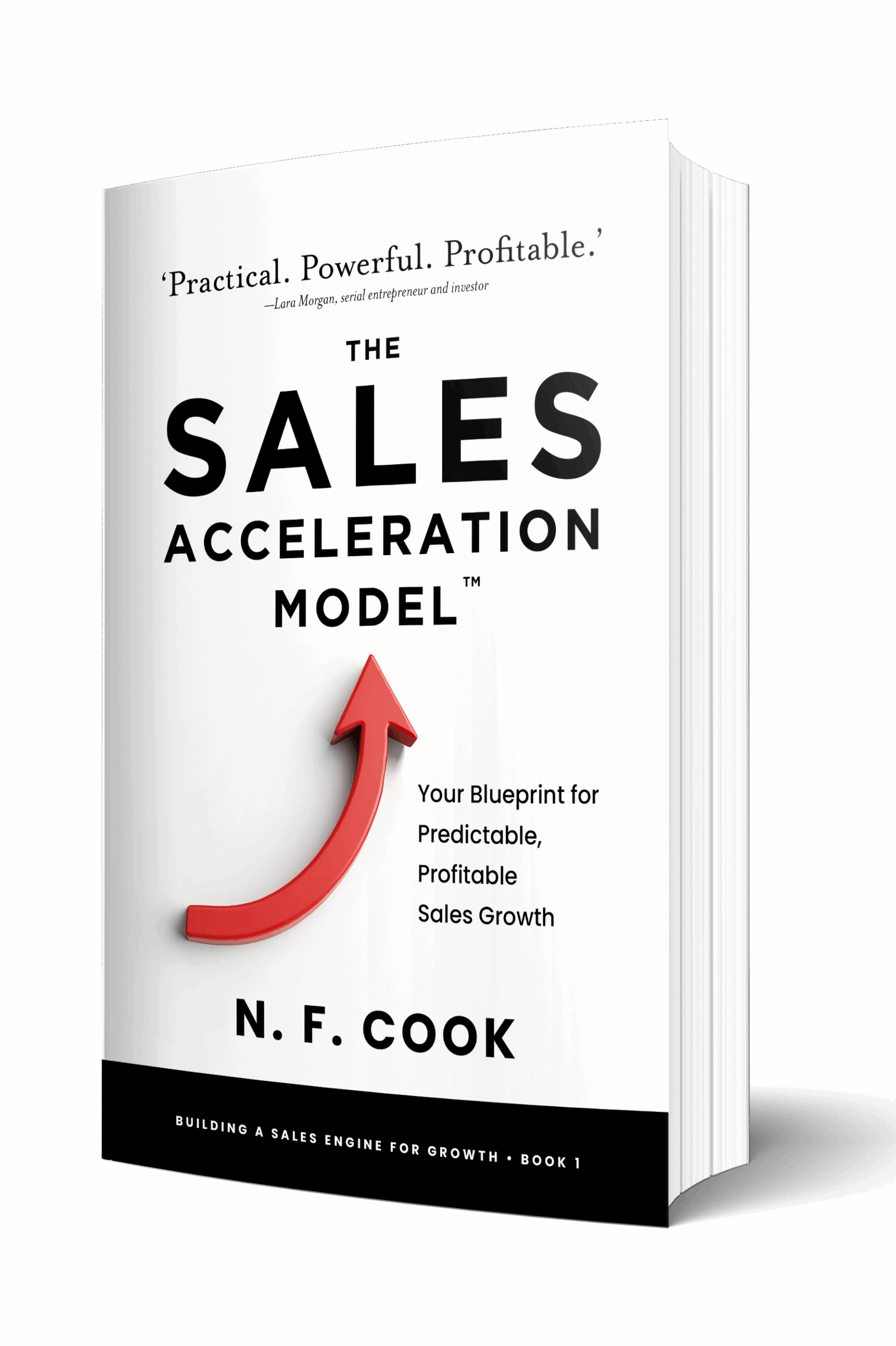As we enter not just a new year, but a new decade, it’s the perfect time to not only reflect
on your past business performance, but on what you want to set as your growth metrics for
the coming year. Obviously, these will dovetail into your three year business plan, and may
include one or more of the following;
What sales growth metric are you gunning for?
- More revenue?
- More profit?
- Larger headcount?
- More customers?
- New offices in multiple locations worldwide?
And how will you know when you’re successful?
- When you achieve the plan?
Or better yet - smash the plan perhaps?
Hmmm. Actually, there are fundamental flaws in linking success to overachievement of
plan. My definition of a successful sales strategy is NEVER ‘by how much have we smashed
the plan by’ - it’s by ‘how closely we arrived to the original blueprint we devised’.
Why? Because then we can demonstrate we had a workable and predictable execution
strategy behind the numbers. One that we can duplicate and scale and continue achieving
within a margin of tolerance. It shows we knew what we were doing, what was within our
control, what our uncontrollable variables were and how we were able to mitigate against
those external market conditions, but regardless that we were able to consistently achieve
the core KPIs that sit behind the sales plan. We did what we set out to do.
In my world, it’s as bad a sign of poor performance to overachieve your plan, as it is to underachieve it.
Measuring sales performance is more analytical today than it’s ever been, and I’m
constantly spouting off to my client’s that within their business lies an algorithm, a sales
algorithm and it’s my job to help them uncover it, so that they can measure it, improve it
and scale it.
Once you’ve arrived at your target number, whether you’re measuring that in revenue,
margin or profit, you must understand how that breaks down into measurable sales outputs
AND sales activity. What is it you need your people to be doing in order to deliver the
number?
Incidentally, my advice, is to always focus on growing profit. Personally, I would much rather
have a business half the size that is delivering the same or more profit – but I’m constantly
amazed how many people wish to continue being ‘busy fools’. Too many businesses don’t
know where they’re profit is coming from (what product mix, client type and/or sector) but
even when they do arrive at some meaningful analysis refuse to take the brave pill and cut
off the non-profit making arm of their business. I once had a manufacturing client circa £2M
turnover who had a £1M turnover product line, a legacy sector that was diminishing and
had no growth potential, which made NO profit. They still couldn’t see the value in letting
that side of the business go. I would have much rather they diverted those resources
elsewhere – but hey ho, sometimes you can take a horse to water …
So, how do you decide what needs to go into the plan to get the output you want?
Simple. Behind every company sales target we should know the answer to the following
three questions.
1. What AOV do we need in order to achieve plan
2. What AOF do we need in order to achieve plan
3. What NC do we need in order to achieve plan
4. Yes – there is a 4 th question! What combination of the first three do we need in order
to achieve plan
These three simple metrics are your ABCs, your daily vitamins or the daily music practise of
your business’s sales growth strategy, yet so many businesses have no idea what they are.
AOV, stands for Average Order Value. When a customer purchases from us, what is the
average value of that transaction.
AOF, means Average Order Frequency. Some business models lend themselves to a
naturally high market driven AOF. Suscbription based business models, FMCG or
consumable products for example. But even without this, how likely is it that your customer
will re-purchase again within a 12month period, or even over the Lifetime of that customer
relationship
(NOTE: in both these first two cases, you can choose to measure AOV and AOF as top-line
revenue, profit or percentage margin. It’s what makes most sense for your type of business.)
NC, the final piece of the metric jigsaw stands for number of New Customers. The place
where when most businesses are focused on growth they place the most attention. Yet we
all know that New Customers are the most expensive to acquire, take the longest amount of
time to convert and require the largest investment of time, energy and resource.
Recently one of my retained clients asked for a meeting as they were concerned that their
numbers were down and they were in danger of ‘losing the year’. We’re talking hundreds of
thousands of pounds behind target within a matter of months and they were down not only
against their current plan, but also the same performance in the previous year. I should say they have a consumable product that drives a base amount of sales revenue, which they
build upon with additional products and offers.
My first question was – ‘Well what’s changed?’ After being met with some blank faces I
continued, ‘Is it AOV, AOF that has changed, or have we lost a chunk of customers for some
reason?’
They didn’t know the answers, (and I was secretly expecting it to be the first metric AOV)
but after some quick analytics it turned out to be AOF. Their core business had reduced
their ordering pattern from nine days to eleven, but because the transaction amounts were
looking the same no one had spotted the difference.
Likewise, my favourite question to an ambitious entrepreneur who proudly shares with me
their aggressive growth plan, citing their both top and bottom line predictions for the next
three years. When I quiz them further and ask, ‘and how are you going to achieve that?’, if
they can’t articulate how that number breaks down into customer categories, with an AOV
of ‘X’ and a repeat AOF of ‘Y’, leading to a LTV (Lifetime customer Value) of ‘Z’, then I know
they haven’t thought about what they actually need to deliver on in order to achieve their
growth. They usually smile sweetly and answer, ‘We’ll just sell harder,’ at which point I
usually sigh, before grabbing my notebook and pen and start scribbling out some basic sales
fundamentals to help them understand what they need to know behind the numbers.
Until you know these basic metrics in your type of Sales Engine, you cannot know what Key
Objectives and sales activity metrics you need to set and measure to ensure your team are
on track.
To be on the advanced notification list for the upcoming release of the 2nd edition of
Nicola’s international bestselling book ‘The Secrets of Success in Selling’, go here;
https://companyshortcuts.com/SOS


